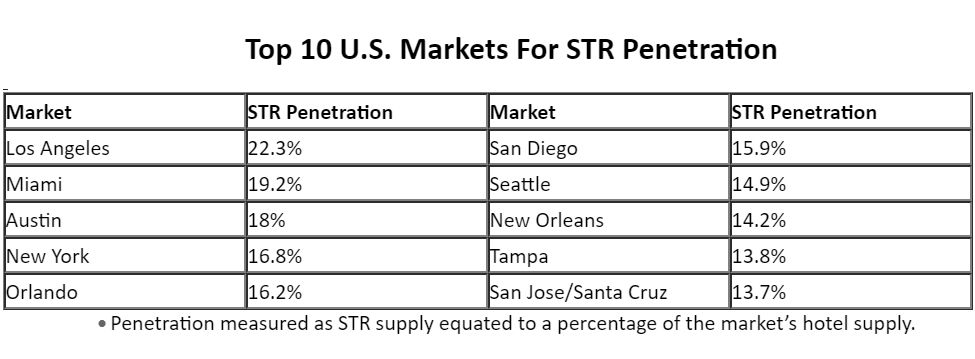
The U.S. Short Term Rental (STR) industry will expand to roughly 650,000 actively rented units this year, equal to 12.2% of the country’s hotel-room supply, according to a report by real estate firm CBRE.
Although still in double digits, the STR sector’s projected growth for 2020 is 19%, down from 26% in 2019 and 39% in 2018. That’s due partly to growing from an increasingly larger base.
STRs typically are houses, condos and unoccupied apartments offered for nightly rent on distribution platforms such as AirBNB or Expedia Group’s VRBO and HomeAway. Many units are listed on multiple platforms, but not all units are available year-round.
“The industry used to essentially ignore the impact of STRs when assessing a hotel’s value, but not anymore,” said Tommy Crozier, Executive Vice President leading CBRE’s National Hotels Advisory Practice. “It’s clear that STRs can have a direct and meaningful impact on hotel performance and asset values. The impact might be more pronounced in some submarkets than in others, contingent on conditions, but it is a legitimate impact nonetheless.”
CBRE’s analysis of data on short term rentals, or STRs, shows that the industry’s growth rate overall is beginning to cool off to an expected year-over-year increase of 19 percent this year, down from 26 percent in 2019 and 39 percent in 2018. Part of that is the effect of growing from an increasingly larger base. Another factor, however, is that some STR growth has shifted outside of big urban markets that are at or near saturation.
The impact of STRs on hotels will vary by location. For example, suburban hotels are likely to see more impact on their nightly rates from nearby STRs than would many urban hotels, which can rely on consistent demand for rooms due to their close proximity to stadiums, concert venues, convention centers and the like.
